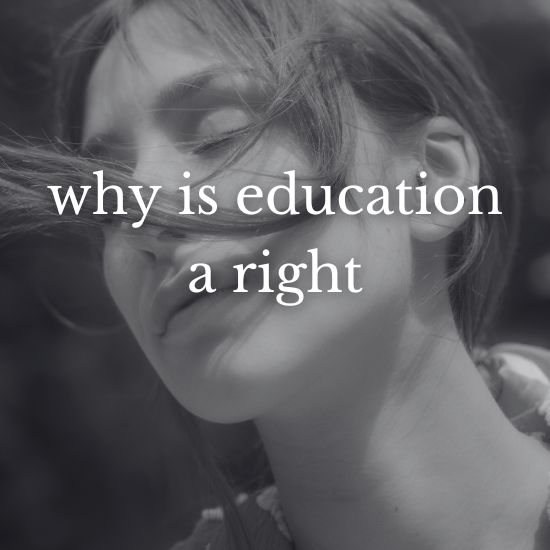Problems of Women’s Education in India
Introduction
A nation’s development can in large measure be attributed to education which is a basic human right. With enhancing enrolment in education in India, the women education issues does remain a concern. It is accepted that India is an emerging economy, yet the conditions of the market set a standard of gender inequality in education that prohibits women from realizing their potential. Women education is crucial enabling not just individuals, but families and communities and ultimately the socio-economics of the country. At the same time, women in India suffer from discrimination at various levels when it comes to accessing quality education. This article aims to explain the issues that restrict women from acquiring education in India and perhaps the solutions to address the issues.
Socio-Cultural Barriers
A. Patriarchal Mindset
The deep rooted patriarchy is arguably one of the most fundamental reasons for the low female literacy in India. Women are treated as caretakers who do not require an education alongside men as their basic role. There are situations and conditions that enforce the fostering of boys education rather than girls education.
B. Early Marriages
Even today, the evil practice of child marriage exists in cultural circles. The child brides are forced to leave school and begin looking after the household. This situation has a severe impact on female education as per United Nations Child Fund ( UNICEF) India accounts for one third of the world’s child brides.
C. Preference for Sons
In many Indian families, the boy preference tends to tilt the balance of power towards a one sided gender inequality. Education of boys who are thought of as future bread winners accounts for little investment while girls are reduced to mere chores and no access to schools.
Economic Constraints
A. Poverty and Financial Issues
For most women in societies, poverty is seen as an obstruction that locks them out of education. In poor households, sons are seen as earning members of the family and families are most likely to educate them while regards education of daughters as a cost or burden.
B. Cost of Education
Governments efforts to promote free education are countered by indirect costs such as clothing, sandals, transportation and even pens and pencils that are basic. Girls are often the first means to be cut off in such households which live under constant financial restrictions and pressure.
Safety and Security Concerns
What are the problems of women’s education in India
Problems of Women’s Education in India Introduction A nation’s development can in large measure be…
What are the benefits of female education in Pakistan
The Profitability of Women Education in Pakistan Education is the basic necessity of all aghast…
why is education a right
Why Is Education a Right The right to education is for everyone; it does not…
A. Lack of Safe Transportation:
Numerous institutions situated in rural and belt areas are distanced from villages. As a result, daily commutes for girls are proved unsafe, and due to fear of harassment or sexual assault, parents do not send their daughters to school.
B. Harassment and Gender-Based Violence:
Shooting cases of sexual and gender based violence in schools or en route the schools stops girls from going to school. Such cases have also been seen where the family’s concern about safety leads them to take a girl out of education, particularly at times when she’s an adolescent.
Inadequate Infrastructure
A. Lack of Toilets and Sanitation:
The lack of hygiene and proper toilet facilities in schools does harm girls students especially during menstruation in most cases. Where there is no clean toilet, girls are forced out of schools and even totally quit going to school.
B. Insufficient Schools and Teachers:
In rural parts of India, especially in lower caste societies where conservatism is practiced tend to have a shortage of schools with a good reachable distance, large class divisions, and a smaller number of female teachers which makes parents reluctant to send their children.
C. Inferior Quality of Education
Despite the principles of free primary education, the status and output of many of the government primary schools continue to be below expectations with regard to pupil-teacher ratios, standardized teaching and availability of qualified staff. In such circumstances, girls tend to suffer even more.
Social Stigma Around Female Education
In many of the traditional societies, there is a negative perception surrounding the instruction of girls. Families fear that an educated daughter will be independent or would go against the order of society. Others think more education will result in higher dowry price and this discourages people from investing in a girl child’s education.
Limited Awareness and Role of Parents
In rural areas, a good number of parents do not understand the value of education for women, especially girls. Limited knowledge on government policies and scholar ships makes the issue worse. Parents themselves are illiterate in many cases and do not appreciate the value of girl- child education in the future.
Impact of Gender Stereotypes
Even employing girls is a broad notion within the circles where girls are perceivably being groomed for women roles so they become seamstresses, or caregivers essentially cooking for the family regardless whatever qualifications they have and therefore deeming any higher education unnecessary. This form of social conditioning results in lowered aspirations of girls beyond a low level of education.
Programs Related to Education and Implementation Challenges
However, the programmes are marred by poor implementation, corruption and ignorance in hilly areas in terms of awareness.
What the Future Holds: Suggestions for Improving Women’s Education Interventions
1. Engaging the Community Through Education
Government and NGOs have a role in creating awareness on the importance of female education. The way how society perceives women with regard to their place has to be changed so as to mitigate the socio-cultural constraints.
2. Cash Incentives
Encouraging families to send their girls to school by providing assistance more in the form of scholarships, stipends and cash will ease the schooling costs. Providing free uniforms, books and transport should be enhanced.
3. Security Issues
To encourage female participation in education, there is the need to ensure security at schools as well as providing safe means of transport. Anti harassment measures and awareness campaigns should also be standard practice in schools.
4. Strengthening the School Facilities
The construction of more high schools in rural areas, the building of separate toilets for girls, and a sanitation infrastructure do allow for better rates of enrollment and retention of girls in school.
5. The Social Role of Technology
It is possible to narrow the gap in education through the use of technology, for instance, through the use of digital classrooms or online education and e-learning platforms. It can empower girls staying in remote areas to continue pursuing their education.
6. Empowering Female Teachers
Acquiring and educating a larger number of female teachers can be helpful to the girls as they will feel safe and are more likely to attend school in rural areas or in conservative places.
7. Sound Legislation
Combining the family structural deficiencies with the ideal family background of enforced laws against practices such as child marriage and harassment and family support systems such as counseling and helplines can address social barriers.
What is the best university in the world 2025 2024
university in the globe given the fact that different rank-ers use different methodologies and criteria….
How do I study medical terminology Chapter 1?
Study Accurate Terminology in Medicine: Chapter One Revision Medical terminology can be a challenging concept…
What are the problems of women’s education in India
Problems of Women’s Education in India Introduction A nation’s development can in large measure be…
What are the benefits of female education in Pakistan
The Profitability of Women Education in Pakistan Education is the basic necessity of all aghast…
Current Trends in Education in the Philippines
Current Trends in Education in the Philippines The education landscape in the Philippines opens new…
What is the definition of an engineer
How Did Engineering Emerge? The first engineers came about because people had needs and they…
Women’s education in India is not only a question of equality, women’s education in India is also crucial for the enhancement of the country. An educated woman does not only work towards her family’s betterment but also for the social and economic growth of the country. Though it has crossed some barriers, India has to look at the factors such as culture, history, economics, policies and the lack of infrastructure and resourcefulness which motivate the women-less education rate in the nation. The involvement of the government, civil society and communities working together is needed to make sure that every girl in India gets her right to education. This process will definitely help in achieving the most ideal goal which is to develop a more progressive and better-off India by first educating the women of the society.







